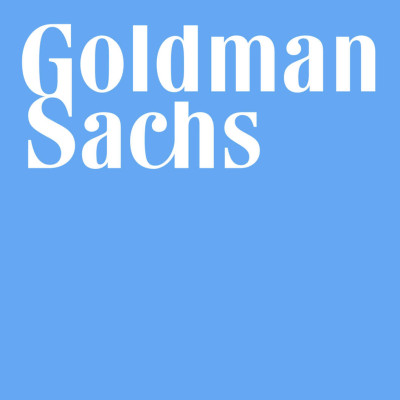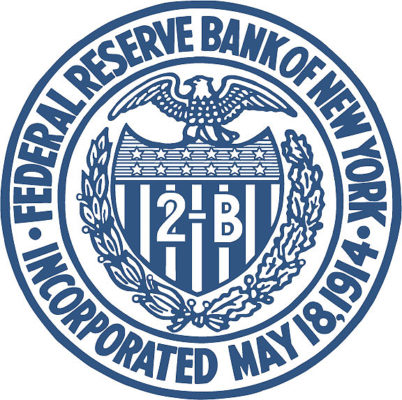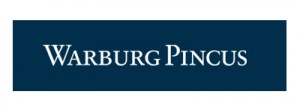Friday, May 19 marked the fifth and final day of our stay in New York City. We first went to Goldman Sachs and had a great time with the speakers from risk management department. The first speaker has worked at Goldman Sachs for three decades and also happens to be a graduate of WashU’s School of Engineering. He shared his career path with us and how he finally found his passion for risk management. The best advice he gave us is to keep learning specific skills in school and thinking about how to apply our knowledge to work. Even though the practical world is different than the theoretical world, the knowledge we learn in school is the foundation of our future work, and when technologies change fast, the foundation does not change. Also, when asked for advice about interviewing, he emphasized the importance of being honest about what you know and what you don’t know, and showing your willingness to learn.
 Next, two younger analysts from the risk management office had a Q&A time with us. One of them just joined the team last year, so she had many recent experiences that we were curious about. Many students asked questions about how to prepare for the interviews and what kind of skills Goldman Sachs required. They also talked about the normal day-to-day work and the training program that Goldman Sachs provides.
Next, two younger analysts from the risk management office had a Q&A time with us. One of them just joined the team last year, so she had many recent experiences that we were curious about. Many students asked questions about how to prepare for the interviews and what kind of skills Goldman Sachs required. They also talked about the normal day-to-day work and the training program that Goldman Sachs provides.
In the afternoon, we headed to another asset management heavyweight on the street, Neuberger Berman, one of the largest independent, employee-owned investment management firms.
After stepping into the fantastic meeting room, holding a nice drink, and enjoying a magnificent bird’s eye view of the New York skyline and Central Park, we understood the reason that Neuberger Berman is consistently ranked as the company with highest employee satisfaction.
 Three senior VP-level speakers shared with us great lessons from their areas of expertise. The head of strategy shared his investment thesis in frontier markets, equity markets, and commodity markets. He also shared his idea of opportunities on investing in fundamentals globally and the trend of macro economics. He frequently discusses these topics with extremely high ranking officials, such as finance ministers of foreign nations.
Three senior VP-level speakers shared with us great lessons from their areas of expertise. The head of strategy shared his investment thesis in frontier markets, equity markets, and commodity markets. He also shared his idea of opportunities on investing in fundamentals globally and the trend of macro economics. He frequently discusses these topics with extremely high ranking officials, such as finance ministers of foreign nations.
The head of municipal bonds shared impressive knowledge on municipal bond pricing, valuation, trading strategy, and wisely linked back to dynamics of US municipality financial operation and the challenges and risks they face. Real case studies on Puerto Rico and Detroit gave international students great exposure to the current US public finance system.
The head of corporate finance explained his strategy in dealing with the global corporate system of Neuberger in tax planning, corporate governing, structure optimization, and company controlling. He shared his personal story and career path, which was very interesting for students like us who want to be a CFO of a leading financial institute with a global footprint.

We concluded our New York immersion course with a guided tour of Wall Street. Our guide was a welcoming gentleman, who used to work as a trader in the New York Stock Exchange. While we were walking along the street, we got to know the history of Wall Street, the market, and its participants. We also visited all the famous buildings on the street and heard great stories from years gone by.
The tour ended at the new World Trade Center (pcitured at left), which stands across from the 9/11 monument. While fascinated by the new tower’s beauty, we began to ruminate on the value of peace for society.
Guest Bloggers: Sihao (Henry) Feng, Ye Qu, Yilin Wu, Jiaqi (Jack) Yang (GMF 2017)
This is a series of blogs chronicling the experiences of 42 Global Master of Finance (GMF) dual degree students during their two week immersion course in New York and Washington, DC. Each blog will be written by a small subset of students during their experience. Names of speakers and presenters at firms are anonymous at the request of the firms and course organizers.








 We were fortunate enough to begin the morning of May 17 with a speaker from Waterfall Asset Management–the visit had been rescheduled from Monday. The incident that had occurred on Monday was able to serve as an interesting case study of sorts for us. Our speaker had placed a bid for a product, but his bid had been only the second- highest submitted. He explained to us both the positive and negative lessons to be learned from this incident. The first lesson is that, in certain instances, being second best only signifies that one is the best loser. He did clarify, however, that this does not always hold true. To paraphrase him, the person who graduates last from medical school is still referred to as “Doctor.” The second lesson is that it is sometimes advantageous to lose. The entity that had outbid him for the product had done so by a wide margin. As this was the case, the entity should probably reassess the risk profile of the product that they purchased. As no other entity thought it was even close to the value as they did, it is probably riskier and worth less than what was paid for it.
We were fortunate enough to begin the morning of May 17 with a speaker from Waterfall Asset Management–the visit had been rescheduled from Monday. The incident that had occurred on Monday was able to serve as an interesting case study of sorts for us. Our speaker had placed a bid for a product, but his bid had been only the second- highest submitted. He explained to us both the positive and negative lessons to be learned from this incident. The first lesson is that, in certain instances, being second best only signifies that one is the best loser. He did clarify, however, that this does not always hold true. To paraphrase him, the person who graduates last from medical school is still referred to as “Doctor.” The second lesson is that it is sometimes advantageous to lose. The entity that had outbid him for the product had done so by a wide margin. As this was the case, the entity should probably reassess the risk profile of the product that they purchased. As no other entity thought it was even close to the value as they did, it is probably riskier and worth less than what was paid for it.
 In the afternoon, we departed for the New York Federal Reserve Bank on Wall Street, and there we had an insightful tour of not only the history of Federal Reserve System, but also its structure and functionality as the central banking system of the United States. Essentially, the Federal Reserve System, founded in 1913, is created to tackle the issues of financial panics. The system is composed of twelve regional banks located in a variety of cities in the U.S., such as St. Louis, Cleveland, New York, and so forth. When the board of governors of the Federal Reserve System along with the 12 presidents of regional federal reserve banks have decided to act on certain mutually agreed monetary policies, the New York Federal Reserve Bank will take the lead in carrying out the monetary policy implementation with all other Federal Reserve Banks.
In the afternoon, we departed for the New York Federal Reserve Bank on Wall Street, and there we had an insightful tour of not only the history of Federal Reserve System, but also its structure and functionality as the central banking system of the United States. Essentially, the Federal Reserve System, founded in 1913, is created to tackle the issues of financial panics. The system is composed of twelve regional banks located in a variety of cities in the U.S., such as St. Louis, Cleveland, New York, and so forth. When the board of governors of the Federal Reserve System along with the 12 presidents of regional federal reserve banks have decided to act on certain mutually agreed monetary policies, the New York Federal Reserve Bank will take the lead in carrying out the monetary policy implementation with all other Federal Reserve Banks.




 Our second speaker for the day was a representative from the Port Authority of New York & New Jersey. The Port Authority is a self-sustaining entity that builds, operates, and maintains critical public transportation and infrastructure.
Our second speaker for the day was a representative from the Port Authority of New York & New Jersey. The Port Authority is a self-sustaining entity that builds, operates, and maintains critical public transportation and infrastructure. Our next speaker was from Hillview Capital Advisors LLC. Hillview Capital Advisors is a premier provider of financial advisory services to high net worth individuals, their families, and foundations. We learned about the role that boutique financial advisory firms, such as Hillview Capital Advisors, play within the finance and private wealth management industry. The company aligns its interest with that of its clients by adopting a compensation structure based on assets under management (AUM) instead of through deal commissions. By acting as an independent investment advisor to their clients, Hillview Capital assists their clients to better meet their investment objectives, subjected to their unique background and circumstance, by optimizing their portfolio asset allocation. The presentation included a period of discussion between the speaker and students regarding the rise of robo-advisors and how the private wealth investment advisory industry can retain its relevance in the future.
Our next speaker was from Hillview Capital Advisors LLC. Hillview Capital Advisors is a premier provider of financial advisory services to high net worth individuals, their families, and foundations. We learned about the role that boutique financial advisory firms, such as Hillview Capital Advisors, play within the finance and private wealth management industry. The company aligns its interest with that of its clients by adopting a compensation structure based on assets under management (AUM) instead of through deal commissions. By acting as an independent investment advisor to their clients, Hillview Capital assists their clients to better meet their investment objectives, subjected to their unique background and circumstance, by optimizing their portfolio asset allocation. The presentation included a period of discussion between the speaker and students regarding the rise of robo-advisors and how the private wealth investment advisory industry can retain its relevance in the future.


 The first morning meeting on May 15 was at Warburg Pincus. Warburg Pincus is one of the top quartile Private Equity (PE) firms, whose value added is mainly from the growth of companies in which it invests. Firstly, he introduced the fundamentals of private equity. Basically, there are three stages of PE firms, which are venture capital, growth/development, and late stage. Warburg Pincus mainly invests in the growth stage. The return of PE is always from two factors—high leverage and fees. Additionally, as the industry becomes mature, the market is more and more specialized. By working for the whole portfolio’s good rather than the sector’s own benefit, Warburg Pincus manages to offset the disadvantage of specialization.
The first morning meeting on May 15 was at Warburg Pincus. Warburg Pincus is one of the top quartile Private Equity (PE) firms, whose value added is mainly from the growth of companies in which it invests. Firstly, he introduced the fundamentals of private equity. Basically, there are three stages of PE firms, which are venture capital, growth/development, and late stage. Warburg Pincus mainly invests in the growth stage. The return of PE is always from two factors—high leverage and fees. Additionally, as the industry becomes mature, the market is more and more specialized. By working for the whole portfolio’s good rather than the sector’s own benefit, Warburg Pincus manages to offset the disadvantage of specialization. The second speaker was from Lepercq De Neuflize & Co. He started the presentation with a general introduction of the financial market and a quick survey about potential job positions among students. As finding a job is the very first thing after graduation, he quickly drew our attention. He then introduced two kinds of people: ones who are smart, and ones who have relationships. Focusing on these two kinds of people, he proceeded with lessons that are important all long a career path, and challenges that these people may face in the future. Also, he answered questions concerning career paths, and pointed out possible ways to get the dream job. Corporate treasury, though few of us considered it as a target job during the survey, became a new choice for us after the presentation. The speaker emphasized the importance of getting to know the industry sector and corporate treasury can provide experience and insights if you cannot find a better way.
The second speaker was from Lepercq De Neuflize & Co. He started the presentation with a general introduction of the financial market and a quick survey about potential job positions among students. As finding a job is the very first thing after graduation, he quickly drew our attention. He then introduced two kinds of people: ones who are smart, and ones who have relationships. Focusing on these two kinds of people, he proceeded with lessons that are important all long a career path, and challenges that these people may face in the future. Also, he answered questions concerning career paths, and pointed out possible ways to get the dream job. Corporate treasury, though few of us considered it as a target job during the survey, became a new choice for us after the presentation. The speaker emphasized the importance of getting to know the industry sector and corporate treasury can provide experience and insights if you cannot find a better way.

